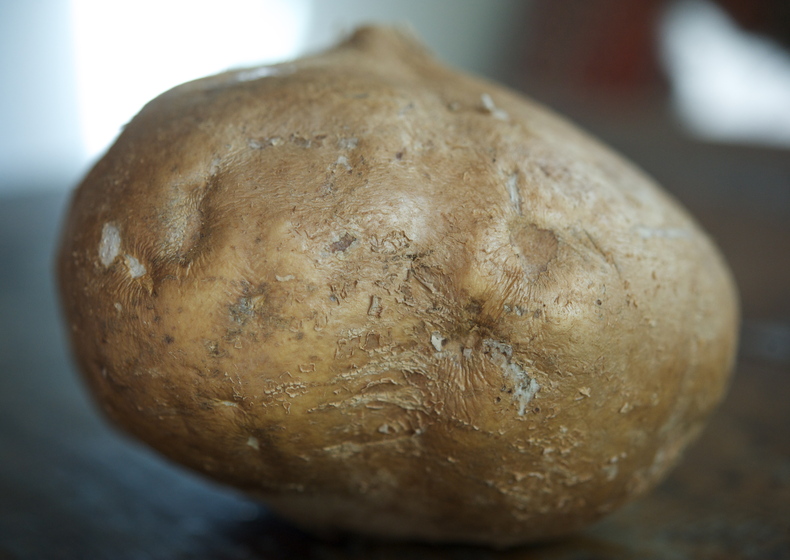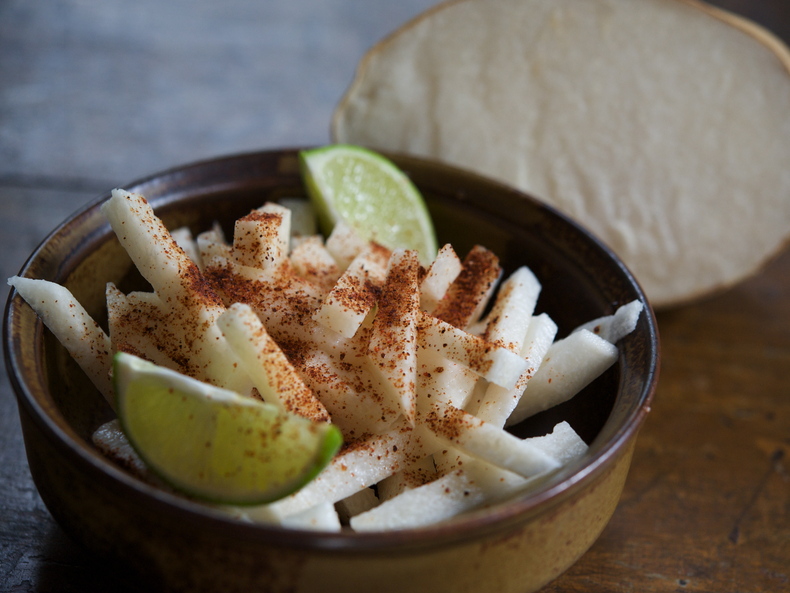6.10.10 Crunch Time
I learned all kinds of crazy things about my beloved jícama as I was doing a little research for you. The word jícama derives from the Nahuatl “xicamatl" for a native Mexican vine, although what we eat is the plant's tuberous root. It’s from the genus Pachyrhizus, commonly referred to as "yam beans," which is yet another name for jícama. The roots can grow to be quite large, although when bigger than a canteloupe, they begin to convert their sugars into starches, becoming dry and woody. In choosing a jícama, look for medium-sized, firm tubers with no wet or soft spots. It will keep under refrigeration for up to two weeks, but I learned that optimal storage temperature is between 50 and 60 degrees, under which conditions it will keep for a month or two.

Jícama looks like something Shrek would eat. The papery brownish exterior should be peeled off to reveal a crisp, creamy white inside with a crisp, watery texture (it’s composed of 80-90% water) that resembles raw potato or Bosc pear. If left out it will oxidize, which is one good reason to douse it with lime. The flavor is sweet and starchy, reminiscent of apples or raw green beans. Excellent raw, it's delicious paired with citrus, chile and salt. It can be used as a substitute for water chestnut in Chinese dishes (don’t cook it much); stewed for an entirely different texture; and juiced for drinks. It’s a great source of vitamin C and is fat free so it makes a fantastic snack. The sweet flavor comes from oligofructose inulin, a prebiotic. Prebiotics are non-digestible foods that remain in the digestive tract and stimulate the growth of beneficial bacteria—as opposed to probiotics, like lactobacilli, that are themselves beneficial bacteria.Of note: Jícama is known as bengkuang in Indonesia, where people in Sumatra and Java eat it at fresh fruit bars or mix it in rujak, a kind of spicy fruit salad. It is so prevalent in Padang City in West Sumatra, that the place is actually called "the city of bengkuang.”JICAMA STICKSThis is sort of a no-brainer, but just in case you're intimidated by this tuber, here's how you tackle it.1 firm, medium-sized jícama2 limessea saltchile powder and/or Tabasco saucechopped cilantro, optionalUsing a paring knife or even a vegetable peeler, remove the outer skin (it should peel off easily in fibrous strips). Slice it in half from north to south, and then slice into 1/4"-thick discs, almost like you would slice an onion. Then slice these into slim sticks. As you go, pile them in a bowl, into which you have already squeezed the juice of one lime.When you're done slicing, squeeze the juice of the other lime on and toss well. Then sprinkle on sea salt and a generous handful of cilantro if you want. Sprinkle liberally with chile powder and/or Tabasco sauce and serve immediately. If you need to hold, cover with foil and refrigerate. It's best eaten as soon as possible.







4 Comments